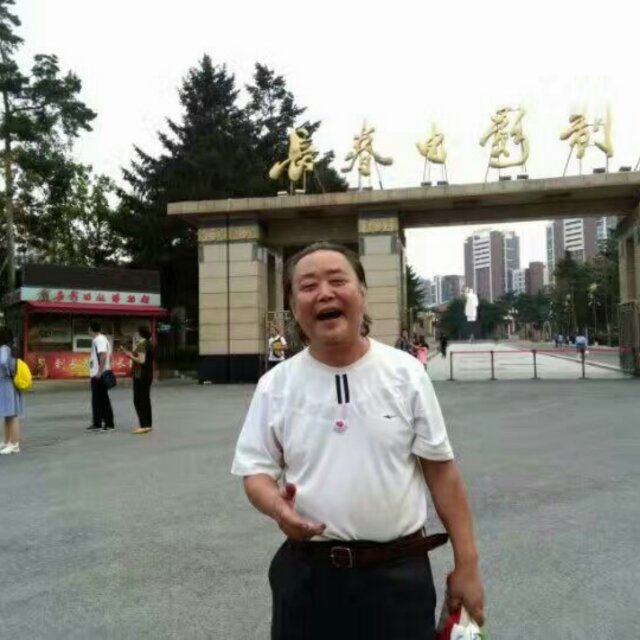Bai Xiaotao
Bai Xiaotao
Personal Profile
Bai Xiaotao was born on February 22, 1950, in Jin County, Dalian. At the age of 16, he went to rural Yushu in Jilin Province, later transferring to Antu.In 1972, due to his foundation in fine arts, he was recruited by Changchun Film Studio as a property assistant. He served in various roles—including property design, set decoration, production, and production supervisor—on numerous films such as *The Flying Cranes*, *The Rolling Wheels*, *Flames on the Yan River*, *The Female Liaison Officer*, *Locking the Longhu Lake*, *The Instant*, *The Third Murderer*, *No. 5 Garden Street*, and *The Empress*. Many of these films received excellence awards in art design from the Ministry of Culture and various film festivals. While serving as production supervisor at the animation division, he produced Changchun Film Studio’s hand-drawn television series *The Story of the Penguin* and *Stories of Chinese Diligence*. Many of his calligraphy and painting works created for films have been collected by the China Film Association and the Film Foundation.
After retiring in 2006, he was invited to work on *Fan Mansion*, *My Happy Life*, and *My Safe Family Letters*, which sparked strong public反响.Born into a scholarly family, Bai Xiaotao’s father, Bai Fan, spent his entire life writing and was a well-known local scholar. From childhood, Bai Xiaotao and his elder brother were deeply influenced by their father, diligently practicing ancient stele inscriptions and making rapid progress. After being sent to the countryside at 16, because of his excellent handwriting, he was frequently assigned by the Cultural Revolution group to copy big-character posters—a circumstance that, albeit reluctantly, allowed his passion for brush calligraphy to continue.
After entering professional life, whether working as a property designer or an art director, he was required under the director’s guidance to arrange environments and create cultural atmospheres within films. The stylistic expressions of calligraphy varied greatly across different historical periods, constantly testing the ingenuity and skill of property and art designers. Bai Xiaotao often says: “Changchun Film Studio shaped me; the older generation of filmmakers nurtured me.”
The veteran filmmakers at Changchun Film Studio came from Yan’an, the Fourth Field Army, and various parts of the country. Many had crawled out of trenches amid wartime gunfire, then put down their guns and picked up pens and cameras. Driven by their love for the Party’s film industry, they learned while working, achieving remarkable success in shaping a golden era of Chinese cinema. Bai Xiaotao still marvels at the selfless dedication, meticulous craftsmanship, and mentorship-by-example spirit of these pioneering filmmakers. Renowned senior art director Li Junjie, property master Sun Guizhong, and animation division chief and chief director Zhong Quan all became his esteemed mentors and friends on his journey of calligraphy exploration.
Bai Xiaotao says: “Previously, I studied the *Xuanmi Pagoda Stele* and the *Cao Quan Stele*. It was the renowned director Yuan Naichen who urged me to rigorously practice Huang Tingjian, the Two Wangs, Sun Guoting, and Dong Qichang. Hence, my current works are infused with the spirit and elegance of these ancient masters.”
For over fifty years, Bai Xiaotao has lived with his brush as his companion, enduring the solitude and hardships of solitary cultivation, yet also experiencing the joy of achievement. In his own words, his path of calligraphy was pursued for the sake of film—and applied for the sake of film.
Bai Xiaotao often tells his friends: “Practicing calligraphy is sleeping with the ancients.” He carries his large dictionary of calligraphy wherever he goes—it serves as his daytime reading material and his nighttime pillow. Even if he wakes up in the middle of the night, he must glance at it several times. His devotion to calligraphy borders on obsession. The joy he finds in solitude and silence, devoid of glamour or sound, is beyond the understanding of ordinary people.
Bai Xiaotao says: “Calligraphy as an art form must inherit and develop the methods of the ancients. If we abandon this tradition, we lose the very essence of calligraphy—and its roots. To achieve both discipline and individuality, one must accumulate sufficient practice. The ancients spent their entire lives using only the brush; our era is different, but without sufficient practice, true success will be exceedingly difficult.”
para-title
TAG:
Bai Xiaotao

 中文
中文  en
en 
